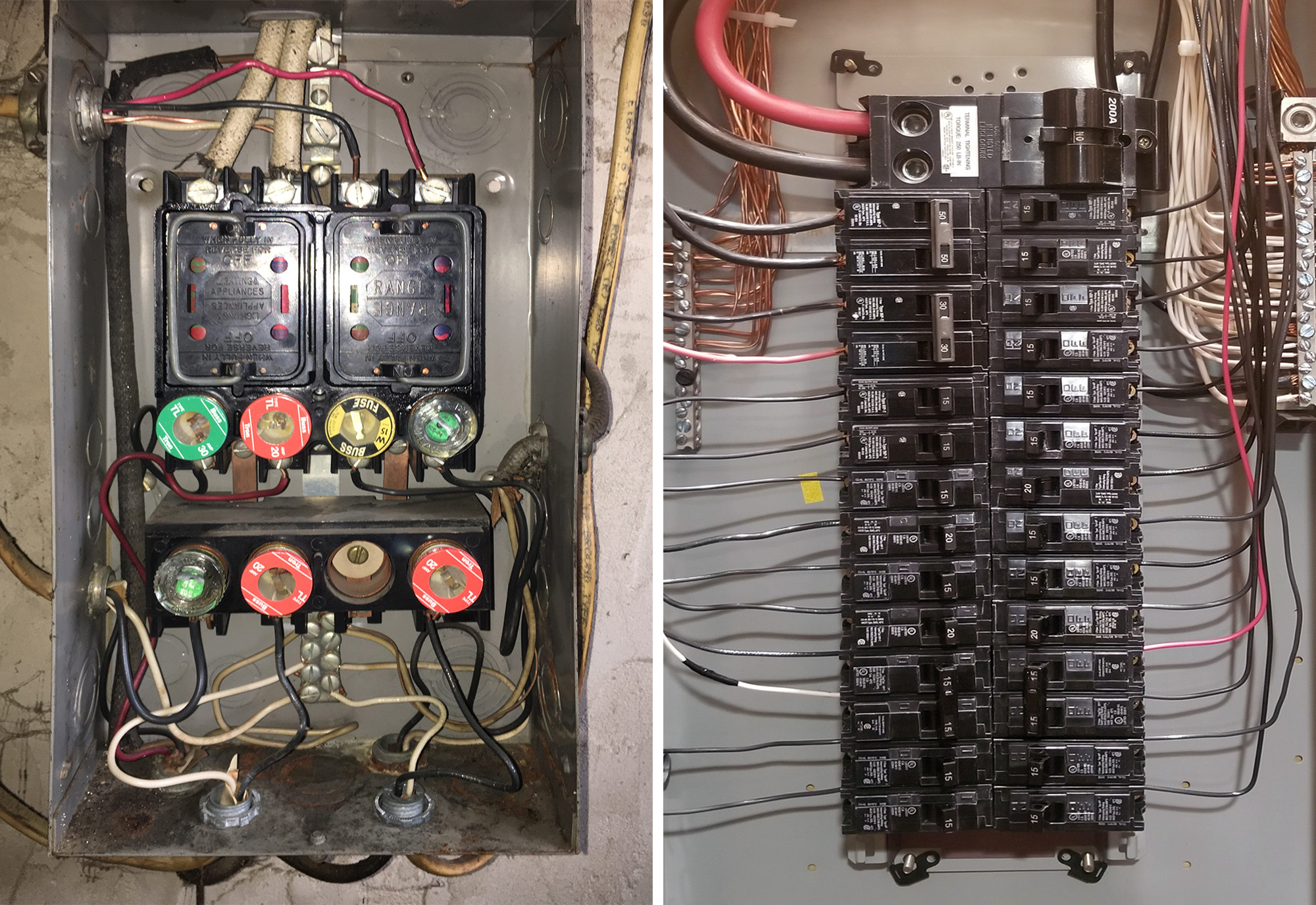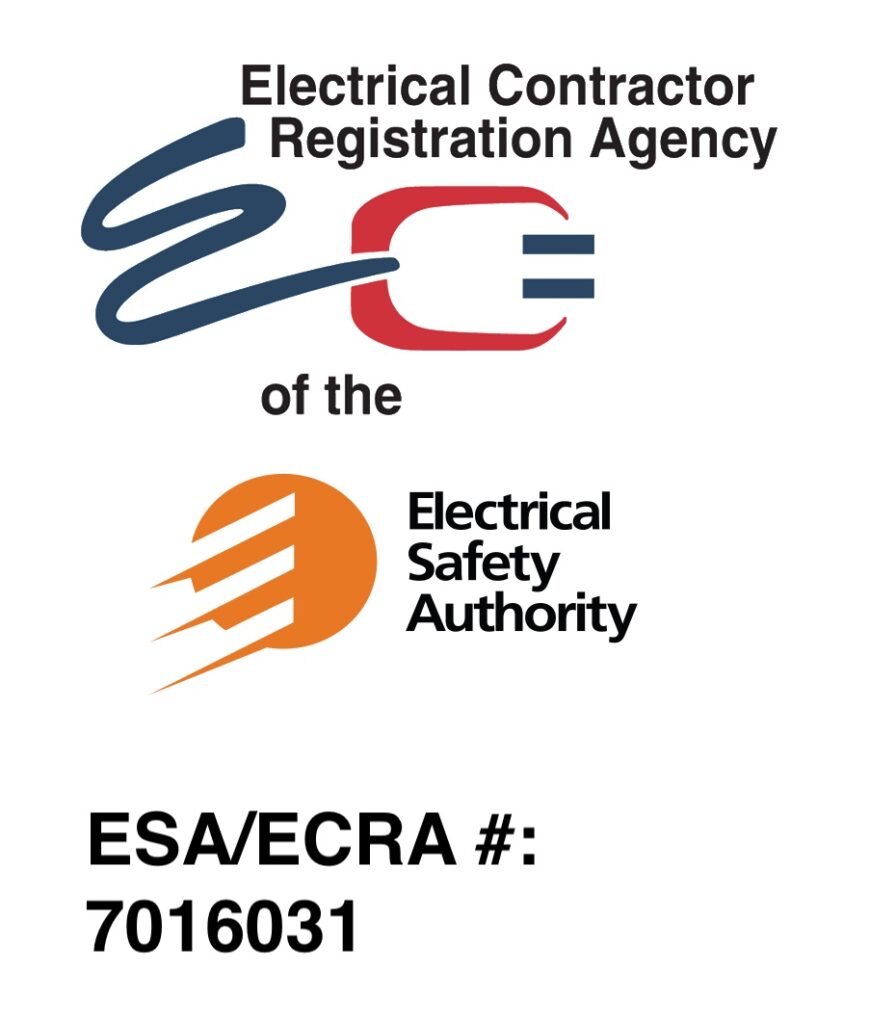Panel Upgrade
Your electrical panel is a part of the fundamental infrastructure of your home. While often overlooked, your panel is responsible for powering everything we in our homes use on a daily basis. The fuses or breakers located inside protect the wires within your walls and ceilings from overheating from carrying too much current. It is critically important to ensure your panel is in good working order, operating safely and is in suitable condition to continue protecting your life and property. Inside we talk about the difference between fuses and breakers, common problems found in home electrical systems, advice on properly maintaining your system and finally, when to decide on upgrading your panel and service. Click here to request our services!

Fuses or breakers?
There are two types of electrical panels you will find in your home. Fuse panels are an older style that commonly use a screw in glass fuse to protect each individual circuit in your home. Every time a fuse is blown it needs to be replaced. Breaker panels became more common in the 1960’s and provided the convenience of being able to reset a tripped breaker without replacing it. If you have a fuse panel in your home, it indicates that your panel is likely very old and may be due for an inspection or upgrade by a licensed electrician.


How do they work?
Fuses and breakers perform the same function in your panel. They are current limiting devices. They protect the wire by limiting the amount of current allowed to travel on them. Wires come in different diameter sizes and the size of each conductor determines how much current carrying capacity that wire has. A fuse or breaker is designed to trip when the current traveling on a wire exceeds the total capacity of that wire. It is important that the size or rating of your over-current device appropriately corresponds to the size or “gauge” of wire it’s protecting. When a fuse is tripped it must be replaced. This is done by un-screwing the glass fuse from its socket, much like a light bulb, and screwing back in a new fuse of the correct size. The benefit to using breakers for your over current protection is that they are easy and convenient to reset. A home owner only needs to fully turn off the breaker and then turn it back on to properly reset a tripped breaker. This also prevents the home owner from being exposed to any live parts unlike when replacing a fuse where the socket or fuse holder is live. Breakers greatly reduce the inherent risk of accidental shock and injury.
Common problems
- It is critically important that a fuse is replaced with the appropriate size. A common problem seen among fuses are home owners replacing a blown fuse with a larger size thinking it will prevent the fuse from blowing again. The problem with this is the fuse may not trip before a wire exceeds its total current carrying capacity. This can lead to heat buildup on wires and connections which can lead to damaged lines and devices or even fires.
- The same mistake can also be made with breakers, though it is less common. A request we often get from customers is if we can upgrade the size of a breaker. The answer is often not without upgrading the size of the wire. Because breakers and fuses are sized to protect the capacity of the wire, increasing the size of your breaker can create a situation where a wire overheats and burns up before the over-current device trips.
- The most frequent problem we see with breakers are home owners continuing to try and reset the breaker without rectifying the cause. When a breaker or fuse trips, it is indicating there is a problem with the circuit. Most often the circuit has been overloaded with too many devices or there is a “dead short” on the circuit. In the case of an overload a breaker or fuse may trip immediately upon being reset, or it may trip after the devices drawing too much current are turned back on. In the case of a “dead short” the over current device is likely to trip immediately after being reset. It is important to isolate the issue before trying to reset the breaker as continually applying current and voltage to the affected circuit will likely cause damage to the conductors, devices and appliances plugged in.
- Finding out you have a fuse panel is not necessarily a cause for concern. Fuses are considered to be more reliable and generally safer than breakers. Though it is also a good indication that your electrical system is old. This fact increases the likelihood that there have been adaptions and modifications that have taken place over the years. If those modifications have been done incorrectly and not up to code this can increase the inherent risk within your system.




What to look out for
During the course of your home ownership you should have your electrical panel and overall system inspected at least once. This inspection should be done by a licensed electrical contractor that specializes in or has experience in diagnosing and troubleshooting residential wiring systems. The typical “home inspection” buyers get when purchasing their home is inadequate for determining the integrity of your electrical system simply because the inspectors often are not licensed electricians. Though they can often identify some common areas of concern a more prudent inspection and diagnosis should be done by someone with specialized experience. It is critical that home owners solicit a licensed electrical contractor for all of their electrical upgrades and repairs. This will help ensure that the work performed on your largest investment is up to code and safety standards, is insured and under warranty and that the proper methods and materials are used to increase the longevity of your installation. A majority of our residential service calls are to diagnose and repair previous “DIY” work.
When should I upgrade?
When deciding wether to upgrade your panel there are two major considerations to make. First is wether or not you should upgrade your panel and second is wether or not to upgrade the capacity of your incoming service from the hydro utility. This typically means going from a 100 amp panel to a 200 amp panel. There are some factors that necessitate an upgrade and there are other factors that strongly encourage them. The most common cause for requiring a service upgrade is based on something called a “load calculation”. This is a pre-determined set of parameters dictated by code requirements that average the total “load” of all appliances and total square footage of your home. Adding heavy load appliances such as an EV charger, hot tub or basement apartment with electric stove can push you over the threshold to requiring a 200 amp service and panel. Other factors that lead to requiring a panel upgrade may be an outdated, poorly maintained, unsafe or otherwise adjunct panel. This can be caused by corrosion over time, improper use or maintenance, damaged components and recalled products. A common panel often replaced are the infamous Federal Pioneer or Federal Pacific panels. The manufacturer was involved in a widespread scandal of manufacturing defects that lead to a cover up from inspectors and regulators. Their panels are estimated to have caused over 2,800 fires, 13 deaths and up to $40 million dollars in damages on a yearly basis.
Click here to read more on 5 reasons to change or upgrade your home panel!
“Virtually every FPE Stab-Lok® panel installed in homes today contains circuit breakers that are seriously defective, and the panels should be replaced. Replacing only the circuit breakers, for instance with new UBI breakers, is likely to increase the risk of an electrical fire”.
Jesse Aronstein via rytecelectric.com
Examples of FPE Federal Pioneer or Federal Pacific Panels











